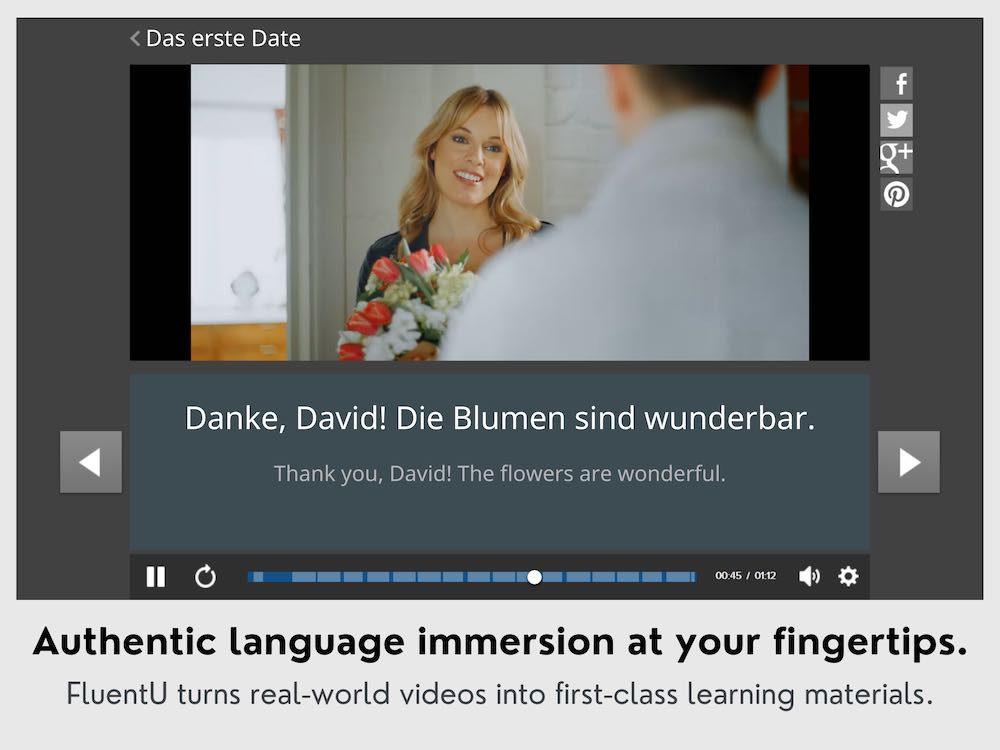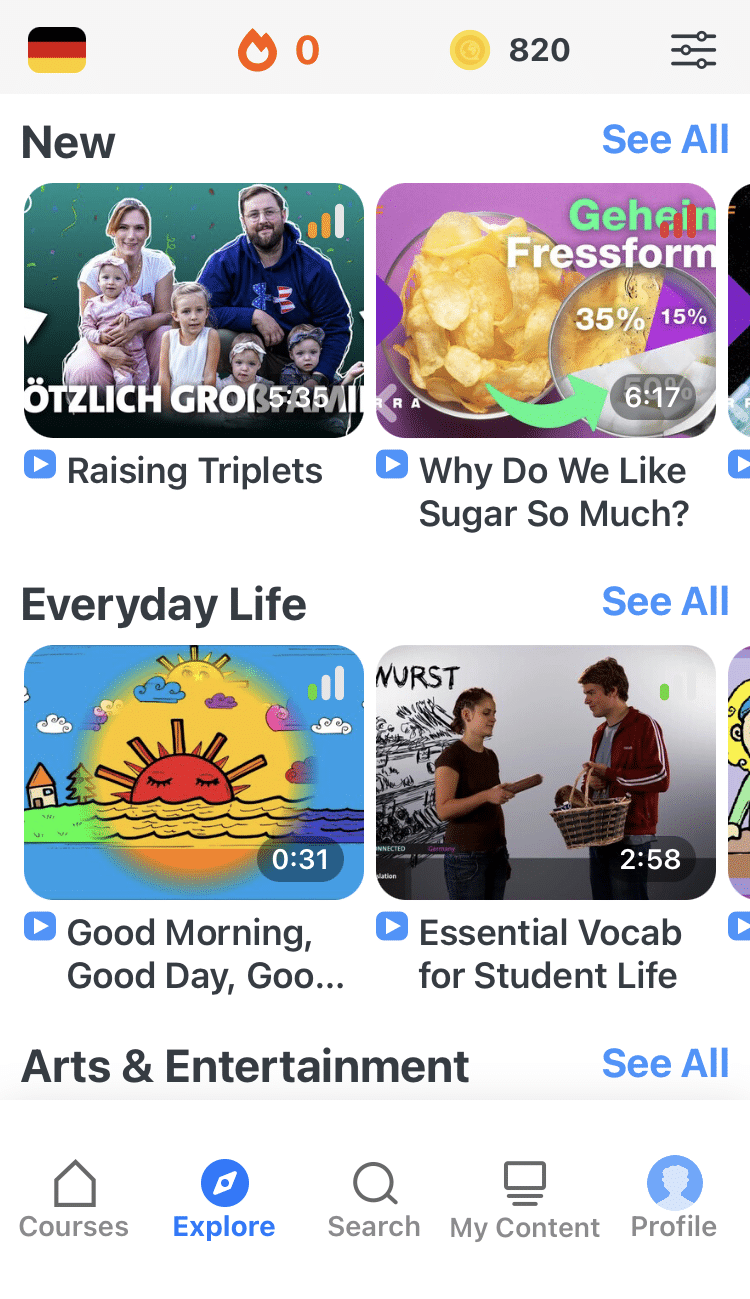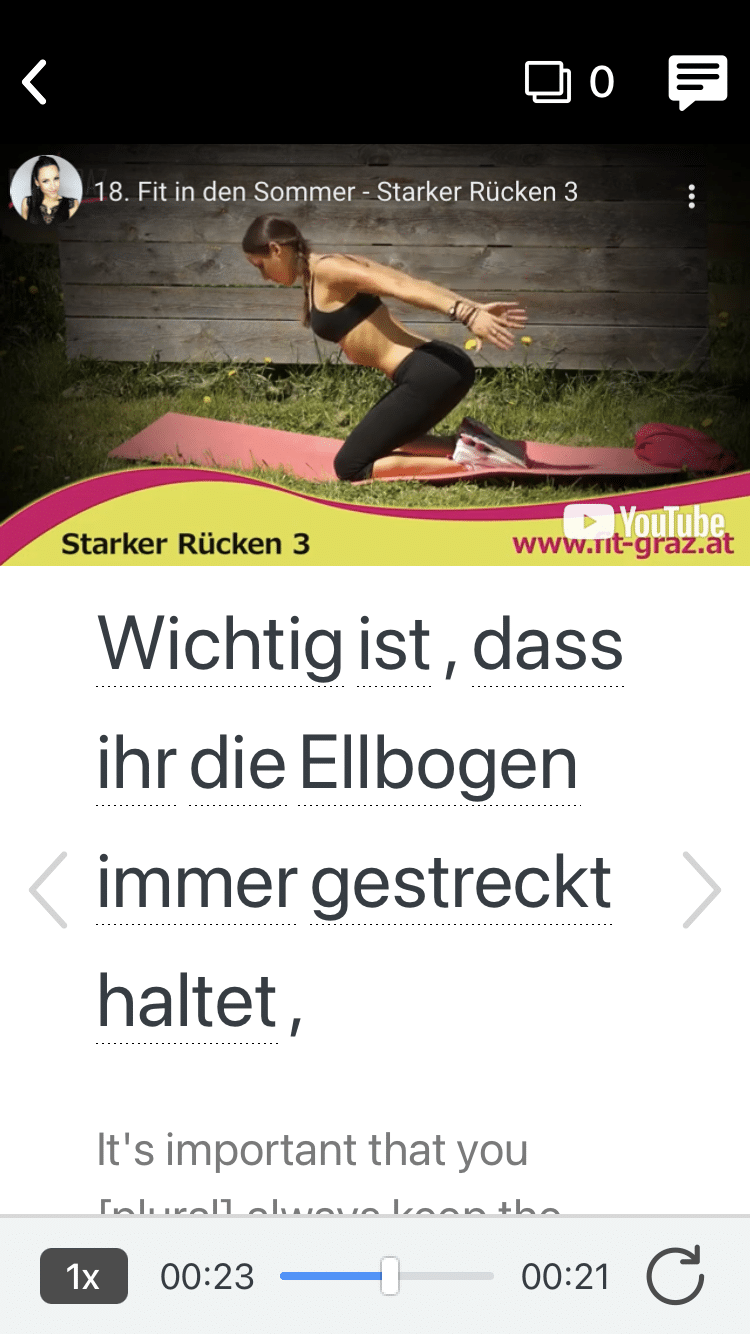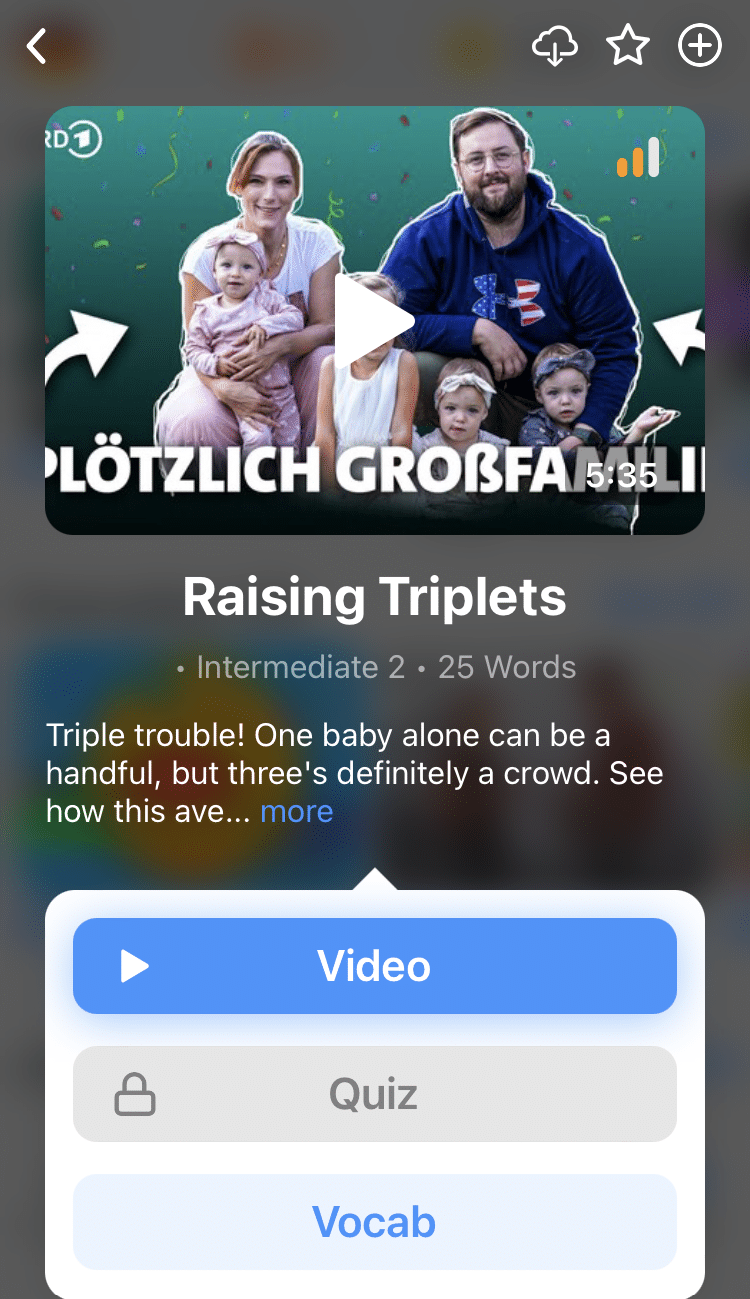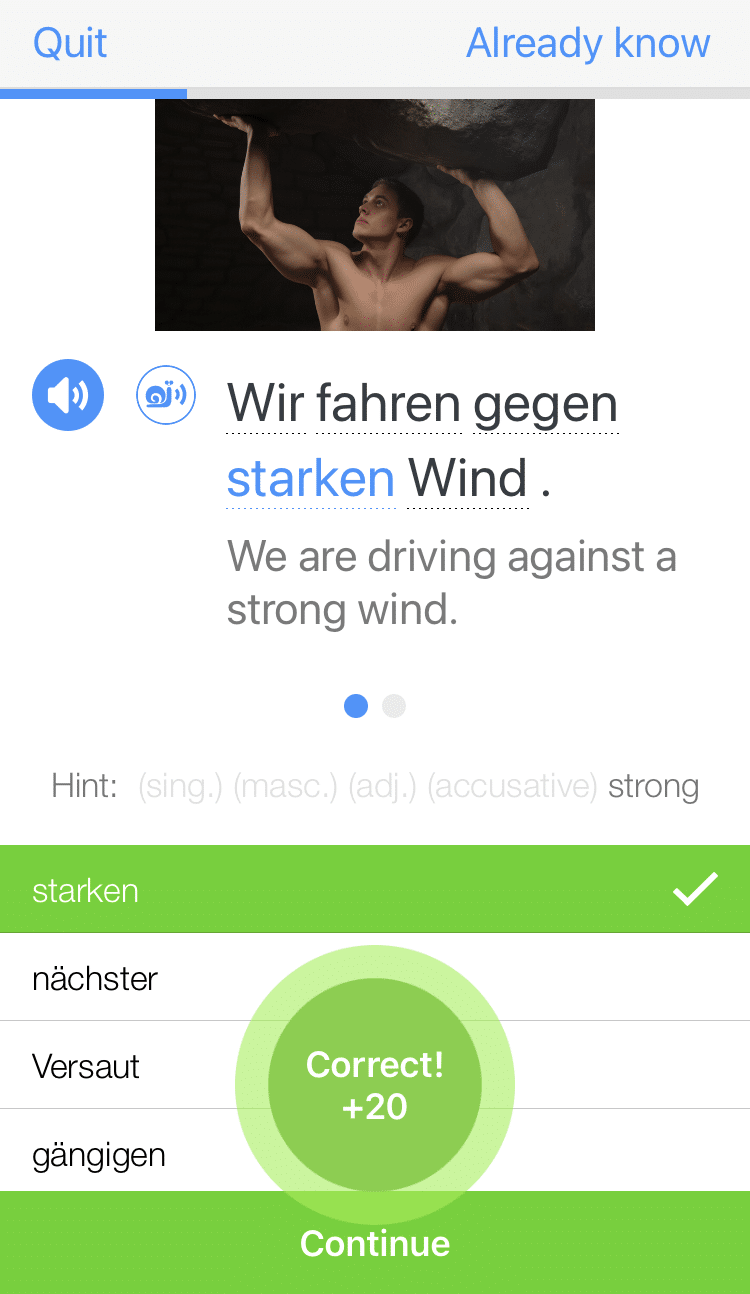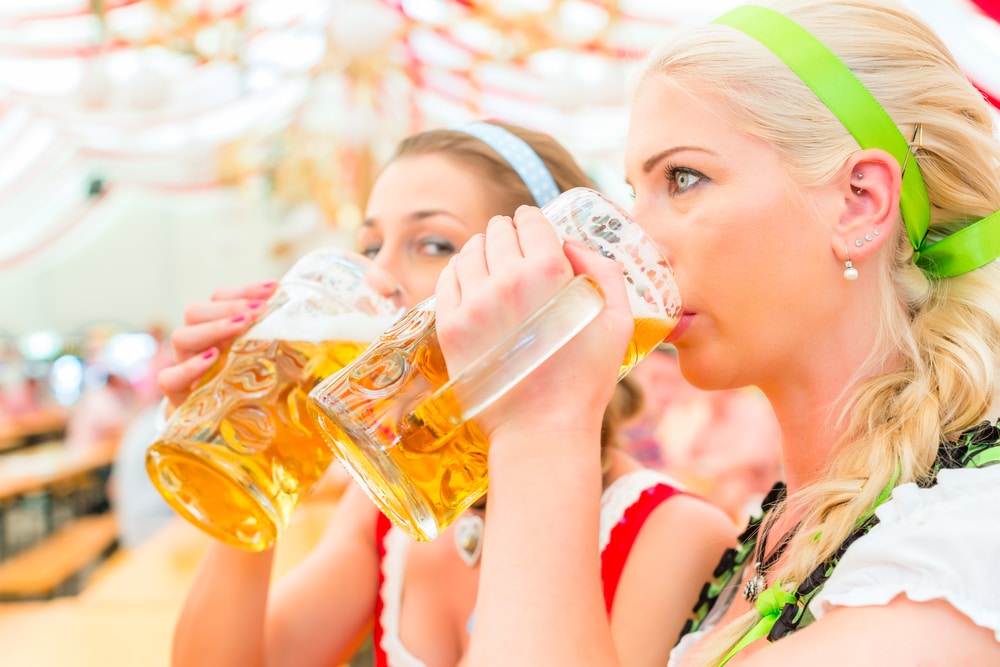
How to Order a Beer in German
If you’re trying to order a beer in German, saying “Bier, bitte!” isn’t gonna cut it.
There are so many details you’d be missing. What kind of beer? What size?
If you really want to show off your ordering expertise, there are many beer options and many grammatical possibilities to ask for one.
This post walks you through everything you need in four easy steps.
Contents
- 1. Saying “I’d like…” in German
- 2. Picking Your German Beer
- 3. Not Bothering Your German Bartender
- 4. Drinking Like a German
- And One More Thing...
Download: This blog post is available as a convenient and portable PDF that you can take anywhere. Click here to get a copy. (Download)
1. Saying “I’d like…” in German
It’s entirely possible to order a beer just by saying “Bier!” to your bartender or server, but you’d come off like a barbarian. You’ll want to build a real sentence out of your request.
Just like in English, there’s more than one way you could do this. Here are three of them.
Ich möchte… (I’d like…)
This is the first way many German textbooks will teach you how to express a wish or place an order. It’s short, it’s easy to remember and it’s a good way to introduce German modal verbs early in the learning process.
The only thing that might trip you up is the pronunciation of ö and ch, but the good news is that we’ve got an in-depth pronunciation guide that can help you with that.
Ich hätte gerne… (I’d like to have…)
This one’s a wee bit longer, but it’s easier to pronounce.
For many learners, this is also a typical first encounter with the subjunctive form of haben (to have), which is a very common way that German speakers express desires or wishes.
For maximum street cred, feel free to drop either or both of those Es, which would result in Ich hätt’ gern…
Für mich ein / eine / einen… (For me, a…)
This is less frequently used, but equally valid.
It’s also a good opportunity to remind you that you should always pay attention to the gender of the German words you learn. This determines which article (ein/eine/einen) to use when placing your order. Since it’s neuter, ein Bier (a beer) would be the most generic option. We’ll get into specifics in a minute.
Remember: no matter which version you go with, it’s always nice to throw in a bitte (please). We’ll have you going from “Bier, bitte” to “Ich hätt’ gern einen halben Liter Hefeweizen, bitte” (I’d like a half liter of Hefeweizen, please) by the end of this post, but you’ll want to add a bitte no matter where you fall between those two.
2. Picking Your German Beer
I should say up front that I’m not a beer connoisseur. I know and love a lot of beer snobs—and I asked for some of their input when writing this post—but to me, beer’s just beer. That’s sacrilege in Germany, I know.
Because in Germany, beer’s not just beer. There are dozens of different kinds and every part of Germany has its local brews. What you’ll find on tap in Hamburg isn’t necessarily what you’d find in a village in Bavaria.
The one consensus among my beer-loving friends is that brands bought out by AB InBev are looked down upon. Beck’s might like to tell you that it’s “the world’s number one German beer,” and while it’s certainly available in Germany, no one seems to love it.
I’ve even heard the argument that since Beck’s sold out to AB InBev (a multinational entity with its HQ in Belgium), Beck’s isn’t truly German anymore, anyway. I won’t wade into that argument, but suffice it to say there are Germans who feel strongly about this.
That’s just one example of how even seemingly simple tasks like ordering a drink can open up a whole new set of German cultural knowledge. Sometimes watching how others order can be beneficial to learning new vocabulary and when to use it.
If you happen to be in a German-speaking location, this might mean literally going out one night and just people-watching. Listen to how the people around you order their beer (and what other vocab they use when chatting with the staff).
But if you have no German speakers near you, you can watch videos made by and for native Germans on FluentU.
FluentU takes authentic videos—like music videos, movie trailers, news and inspiring talks—and turns them into personalized language learning lessons.
You can try FluentU for free for 2 weeks. Check out the website or download the iOS app or Android app.
P.S. Click here to take advantage of our current sale! (Expires at the end of this month.)
Let’s get into some types of beer you’re likely to find in Germany. This list isn’t exhaustive but an overview of the many styles should help you feel less overwhelmed than I was when I first showed up at a German pub.
Pils / Pilsner / Pilsener
Yes, those are basically three different ways of saying/spelling the same thing. And yes, they mean the same thing as the English word pilsner.
This type of beer is everywhere in Germany (and the world, for that matter). It’s light amber in color and has a slight bitterness from its hops. If you’ve ever had a Budweiser you’ve had one, but please don’t judge all pilsners by Bud. German pilsner is much more flavorful and less watery than that.
Berliner Weiße (literally, “Berlin white”)
This light wheat beer is often served up in a short, wide glass in an unnatural shade of red or green. The color comes from the small shot of either Himbeersirup (raspberry syrup) or Waldmeistersirup (woodruff syrup) that typically comes with the drink.
In the European Union, the name Berliner Weiße is protected and the beer must be brewed in Berlin. However, Berliner Weisse (an alternate spelling easier on English keyboards) is starting to pop up in the U.S. and elsewhere.
This is the only beer variety on our list that’s feminine (die Berliner Weiße), by the way. Everything else is neuter (das Pils, das Hefeweizen, etc.). Hopefully that’s easy to remember!
Hefeweizen (literally, “yeast wheat”)
Hefeweizen is a cloudy wheat beer that has been gaining in popularity worldwide thanks to the thousands of craft breweries entering the game across the globe. It typically has a higher alcohol content than Berliner Weisse and a richer color and flavor—no artificial syrups needed.
Hefeweizen is traditionally served in a curvy glass, not a bottle (and cans are just heresy).
Schwarzbier (black beer)
Schwarzbier is a dark lager that gets its color (and thus its name) from its high roasted malt content. This makes it similar to the dark stout that English speakers may be used to. It’s not a top seller, but many bars will have at least have one variety available.
Kölsch (beer from Cologne)
Kölsch is another protected beer in the EU. It must come from the city of Köln (Cologne). That said, its imitators—sometimes irritatingly rendered “kolsch” without the umlaut, which is totally wrong—are starting to make inroads in the international craft beer scene.
This beer is very similar to pilsner, but often a little less bitter.
Märzen (March beer)
If you’re thinking of Oktoberfest, you might be thinking of Märzen lager.
Its name comes from the fact that it was historically brewed in March ( März in German) in accordance with a 1553 Bavarian law that banned the brewing of beer from April onwards. This beer stored well and could thus survive the brew-ban summer months from April to September. (You did know that Oktoberfest actually starts in September, right?)
3. Not Bothering Your German Bartender
So you know how to order and you’re not confused by the Getränkekarte (drink menu). That’s a start. But then your bartender says, “Groß oder klein?” (large or small?). Huh? What now?
Most of the time, a small beer is about a third of a liter and a large is a half-liter. If you’re at Oktoberfest, the traditional Maß (mug) is a full liter.
Sizes must be marked by law. There’s a legal pour line on every single glass in every German bar, so you know you’re always getting your money’s worth.
Depending where you get your drink on, you may be charged a Euro or two more than the price on the menu. This is common at concerts, festivals or even beer gardens which have tons of customers or where people walk around with their beers, but shouldn’t come up at a sit-down bar.
If it happens, don’t freak out: this is just the Pfand (glass deposit). If you bring your empty glass, mug or bottle back to your bartender without breaking it, you’ll get your coin back.
Speaking of bartenders and coins: do tip! The full American 20 percent isn’t expected, but at the very least, you should round up to the nearest Euro. Confirm this in a verbal exchange—don’t just silently leave money on the counter. If your bartender tells you a drink is “vier euro fünfzig” (€4.50), hand her a fiver and say “fünf” (€5) or “stimmt so” (keep the change).
She’ll know immediately that the extra 50 cents is hers and you’ll hear a quick “danke” (thanks).
4. Drinking Like a German
You made it through the wilderness! You can now pick a Bier, order it in a grammatical fashion and tip properly. Now the fun part—actually drinking.
Don’t just toss it back until everyone has been served. Once everyone has their order, raise your glass and say either “Prost!” or “Zum Wohl!” Both are ways to say “cheers” in German.
Not every occasion will call for this next part, but at an informal gathering around a small enough table, you’ll want to clink your glass with each one of your companions.
Each time you do this, look the other person in the eye. Germans are very serious about this, so make sure you do it! Legend has it, if you don’t look the other person in the eye, you’ll be cursed with something naughty. We’ll keep it family-friendly here, but you can always ask your German tandem partner about it on your own time.
And there you have it! You can now order a German beer (and drink it!) like a native. May you never again be reduced to “Bier, bitte!” miming hopelessly or worse—ordering in English.
Zum Wohl!
Download: This blog post is available as a convenient and portable PDF that you can take anywhere. Click here to get a copy. (Download)
And One More Thing...
Want to know the key to learning German effectively?
It's using the right content and tools, like FluentU has to offer! Browse hundreds of videos, take endless quizzes and master the German language faster than you've ever imagine!
Watching a fun video, but having trouble understanding it? FluentU brings native videos within reach with interactive subtitles.
You can tap on any word to look it up instantly. Every definition has examples that have been written to help you understand how the word is used. If you see an interesting word you don't know, you can add it to a vocabulary list.
And FluentU isn't just for watching videos. It's a complete platform for learning. It's designed to effectively teach you all the vocabulary from any video. Swipe left or right to see more examples of the word you're on.
The best part is that FluentU keeps track of the vocabulary that you're learning, and gives you extra practice with difficult words. It'll even remind you when it’s time to review what you’ve learned.
Start using the FluentU website on your computer or tablet or, better yet, download the FluentU app from the iTunes or Google Play store. Click here to take advantage of our current sale! (Expires at the end of this month.)
